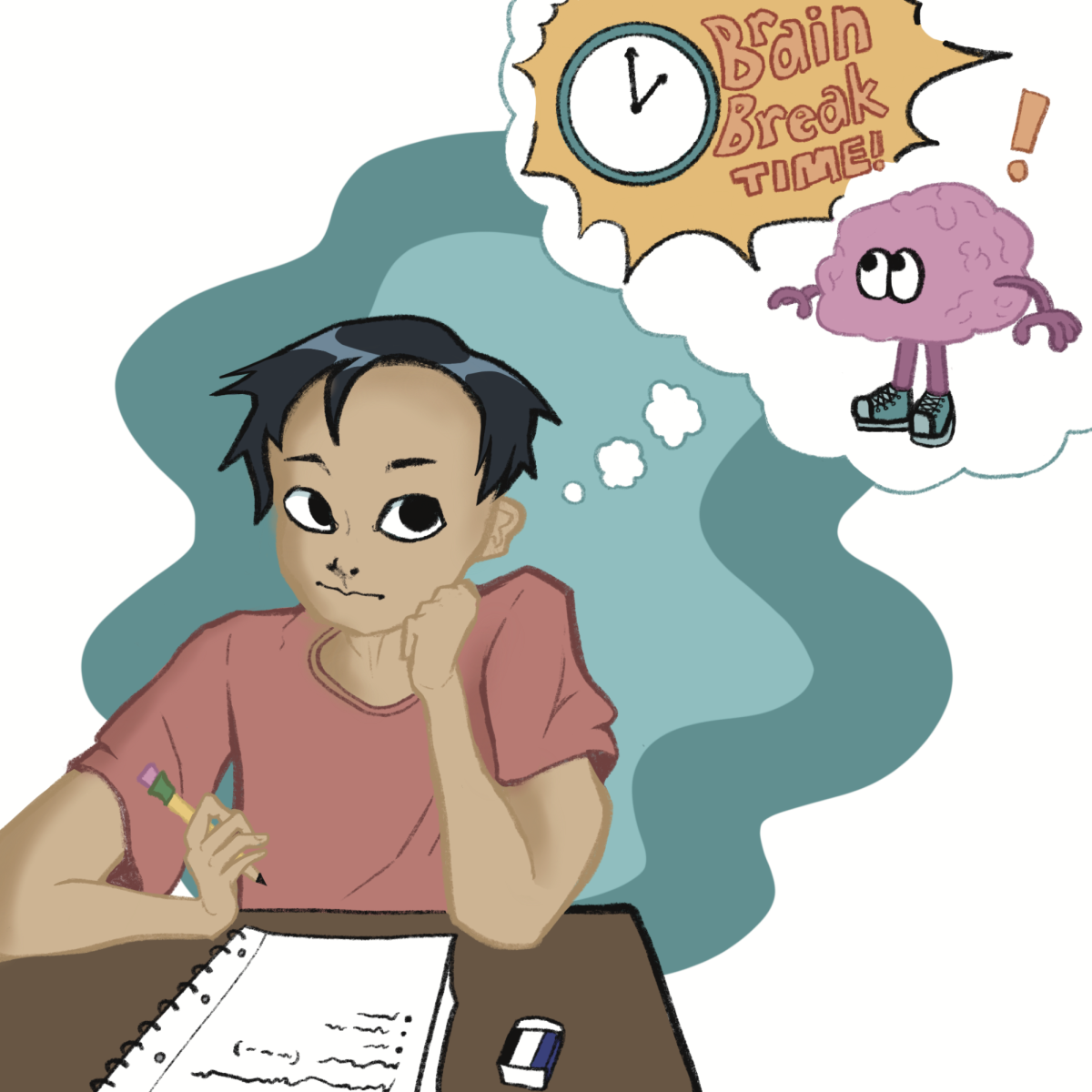During long 90-minute math or science periods, I often find myself struggling to stay awake and focus on the material without getting distracted or sidetracked.
When I look around the classroom, I’ll notice I’m not alone. Often, I see the telltale falling jigsaw pieces of Tetris on my peers’ computers while others rest their heads on desks with their eyes closed. Having so many kids being distracted results in less attentive students and more studying at home– which ultimately leads to an increase in stress.
While I believe long classes are extremely beneficial for learning, they can also make it extremely difficult to learn material well.
All classes should incorporate purposeful five-minute breaks into classes in order to engage the class and make it easier to focus and allow time for students to engage with peers.
According to Cornell Health, taking short purposeful breaks during extended periods of studying can have many benefits on the brain.
The study shows breaks with purpose rejuvenate you mentally while also boosting productivity.
During long lectures, taking notes and staying attentive are not only difficult, but also monotonous. If students cannot pay attention during the full class, teachers might as well make space in the agenda for a purposeful five-minute break.
This would not only benefit the students by helping them regain their focus, but also allow teachers to use class time more efficiently instead of forcing students to be barely focused during the period.
Taking five-minute breaks also allows students to take their minds off the lecture, stretch their legs and get water, which means they’ll come back with renewed energy to be productive.
Five-minute breaks take up less than 6% of class time, and still allow the other almost 95% of class for dedicated learning.
Edutopia, a website that explores ways to promote innovative learning, said breaks supply students with many emotional benefits. These include stopping students from feeling swamped, contemplation on the material, happiness and time to talk.
When students feel overwhelmed, it’s hard to keep a collected mind. This mentality is vital to learn. Additionally, according to Teaching Channel, a site made to educate teachers about teaching, breaks can boost creativity and make work feel less scary.
For myself, breaks allow me to collect my thoughts and reflect, which is an extremely important part of learning. During breaks, students often share ideas about the current activity or lecture with each other. This provides even more opportunities for growth because it allows students to collaborate and helps provide a time for discourse. It also allows time for me to ask questions and discuss answers with my peers, which is extremely beneficial to my learning process because it forces me to restate and fully understand concepts.
While some students, when let outside, can be disruptive or self-extend their breaks past five minutes, there are ways to combat such situations. For example, teachers could provide students with a five-minute break within the classroom so as not to disrupt other classes.
Dedicating five minutes of class time for a break can drastically improve a student’s ability to focus and allow them time to discuss content learned with peers, which is exactly what students need. Five-minute breaks take less than six percent of class time for substantial benefits, so why not have all teachers incorporate them into their classes?




